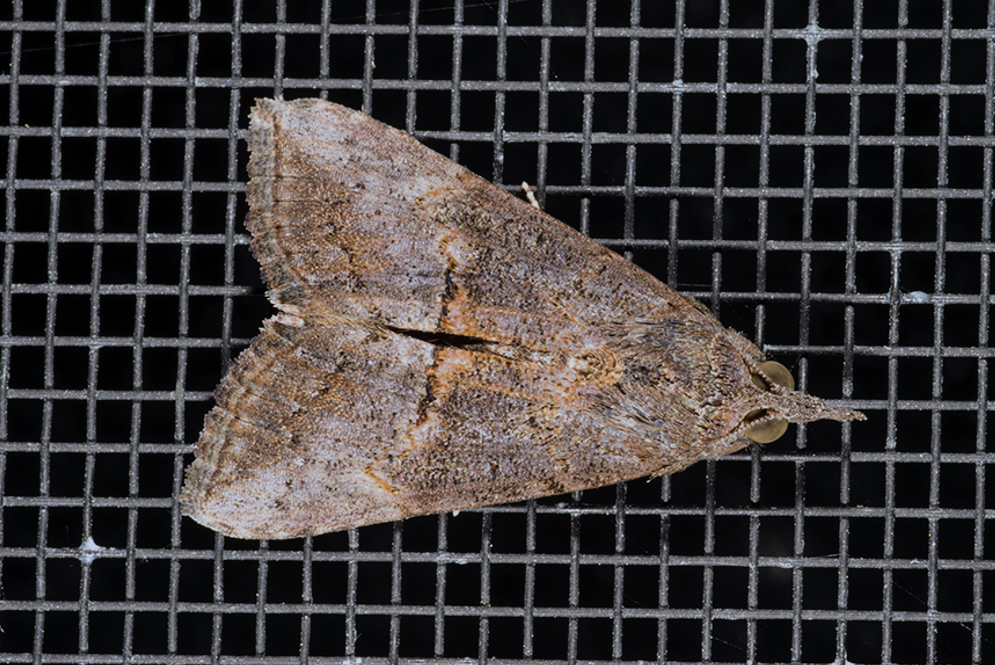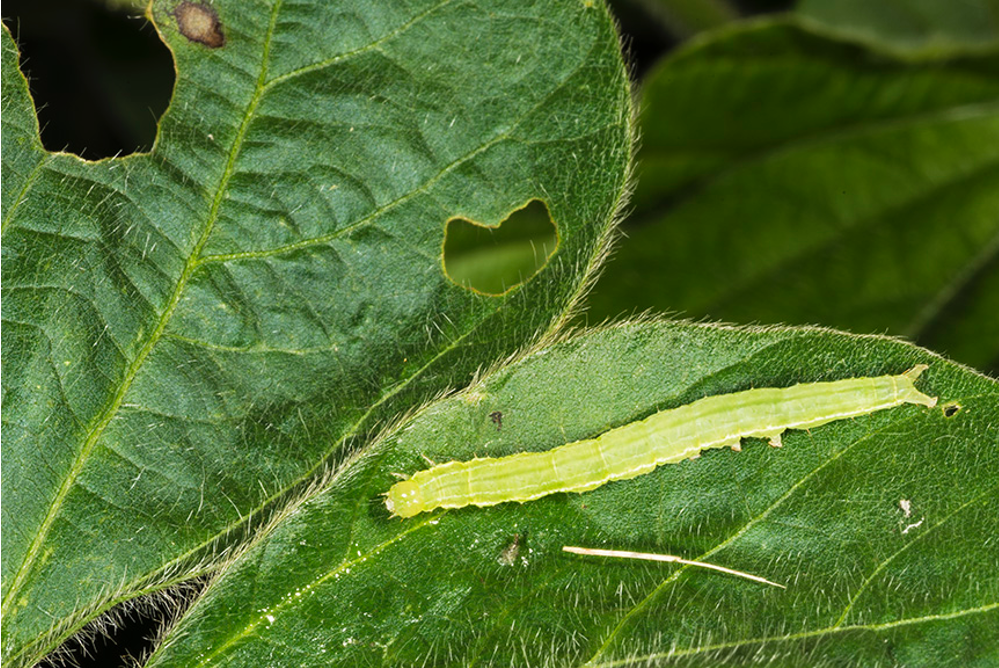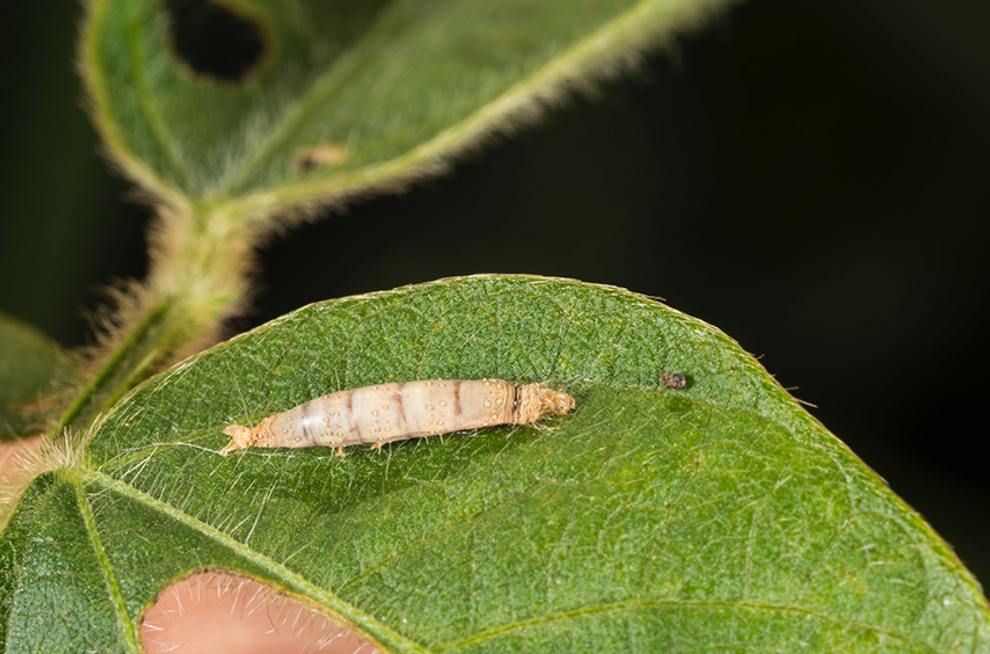We’ve received questions about black, triangular moths flying around farms, homes, and yards, and especially to lights at night. These moths are actually mottled grayish-black and when at rest they have the triangular shape of a stealth fighter jet. These are likely the adult green cloverworm (Noctuidae: Plathypena scabra). Another large outbreak of these moths in Indiana occurred in 2016.
The slender green caterpillars feed on soybean foliage, as well as alfalfa, clover, and other leguminous plants – and there are obviously many of those plants scattered around the Indiana countryside! The caterpillars are quite common in soybeans. However, they are generally not at pest levels and their feeding is not economically significant. Normally, fungal pathogens, as well as insect parasites and predators, keep green cloverworm populations in check. Evidently, those natural controls were not as effective this year and allowed the cloverworms to increase in number. The result is lots of the adult moths flying around lights and residences.
These moths are only a nuisance and are completely harmless. The moths will pass the winter in leaf litter and/or other sheltered areas and next spring the survivors will emerge and begin egg laying.





